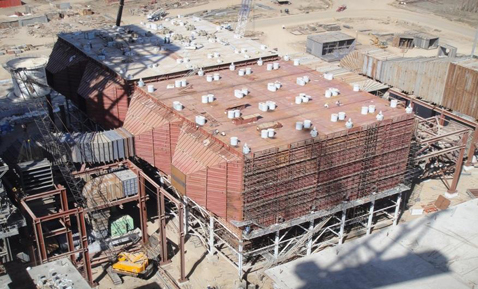 India’s stock of stalled projects at the end of December 2014 stood at Rs.8.8 lakh crore, or 7 per cent of GDP, reveals an analysis in the Economic Survey 2014-15.
India’s stock of stalled projects at the end of December 2014 stood at Rs.8.8 lakh crore, or 7 per cent of GDP, reveals an analysis in the Economic Survey 2014-15.
The analysis brings out several key points. Firstly, the stalling rate of projects has been increasing at an alarmingly high rate in the last five years, and the rate is much higher in the private sector. Secondly, the rate of stalling seems to have plateaued in the last three quarters and the stock of stalled projects has come down to about 7 per cent of GDP at the end of the third quarter of 2014-15 from 8.3 per cent the previous year. Thirdly, manufacturing and infrastructure dominate private sector stalled projects, and manufacturing dominates in total value of stalled projects even over infrastructure, while the government’s stalled projects are predominantly in infrastructure. Fourthly, stalling of projects has been severely affecting the balance sheets of the corporate sector and public sector banks, which in turn is constraining future private investment. Lastly, despite high rates of stalling and weak balance sheets, equity market seems to be performing quite well.
The analysis points out that based on the situation of public sector banks and corporate balance sheets, the expectation with regard to private sector investment needs to be moderated and public investment may have to step in for crowding in private sector investment in the short term. It calls for revitalising the public-private partnership model of investment and also setting up of an independent renegotiation committee to deal with the weak mechanisms for bankruptcy and exit.
At the end of the third quarter of the current financial year, for every 100 rupees of project implementation, 10.3 rupees worth of projects were stalled, and the number for private sector stood at 16, according to the analysis.
The stock of stalled projects is driven by two factors – rate of stalling and rate of revival. At the end of third quarter of 2014-15, the rate of stalled investments came down to around 7 per cent of GDP from 8-9 per cent of GDP over the last three fiscal years. Out of total stalled projects worth Rs.8.8 lakh crore, the public sector accounts for Rs.1.8 lakh crore and the private sector Rs.7 lakh crore.
In terms of share, electricity and services dominate for both public and private sectors, while manufacturing forms the major component of stalled projects in the private sector.
One sector with a large number (and total worth) of stalled projects in both public and private sectors is electricity. At the end of third quarter of 2014-15, the number of projects stalled in the electricity sector stood at 80. Of this, 75 were in generation and five in distribution. Out of the 80 projects, 54 were in the private sector.
An important point to note is that almost all the stalled projects in electricity under the ‘private’ category are public-private partnerships, which affects the public sector directly. The analysis shows that manufacturing, mining and electricity, in that order, have had the highest stalling rates in the last few quarters among all sectors. Air transport, roads and shipping were the other big contributors in infrastructure. Within the manufacturing sector, steel, cement, garments and food processing accounted for the largest share of stalled projects.
The analysis attributes the stalling of private sector projects to market conditions and non-regulatory factors. In case of government projects, it points towards lack of required clearances as the primary reason for stalling.











